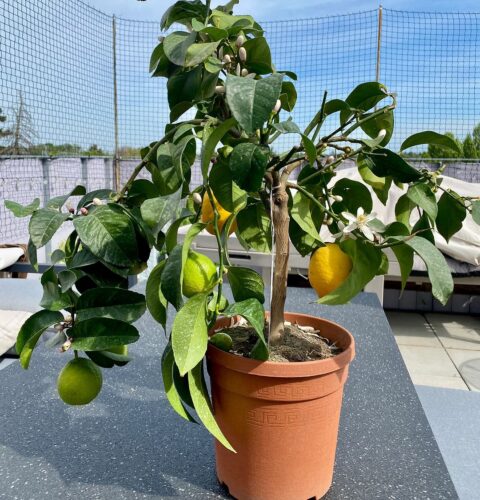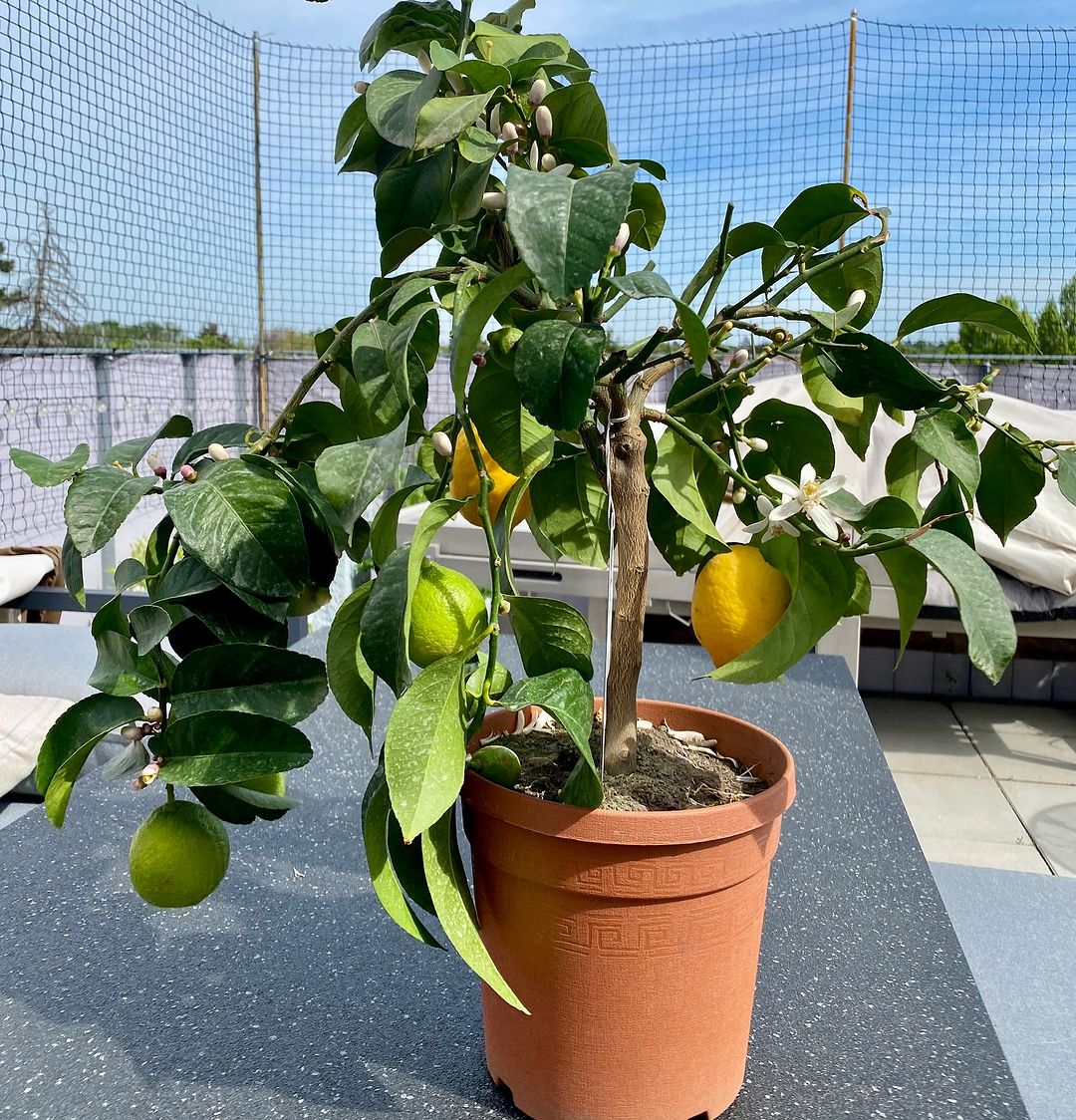Read the best easy-to-follow tips for Growing Lemon Tree in a Pot and harvest fresh, home-grown, juicy fruits.
If you are short on space but also want to start a lemon garden, learn Growing Lemon Tree in a Pot with the help of the given tips and have an unlimited supply of citrus fruits.
Growing Lemon Tree in a Pot

1. Choosing a Lemon Plant
Choose a lemon plant variety that suits containers; Meyer lemon is a naturally smaller tree and lasts long in pots. Dwarf lemon plants produce the same size and quality, but the yield can be 50-60 percent less. Buy a good quality, healthy, high-yield plant from a nursery.
You can go with a grafted lemon plant as it begins to yield fruit in the same year. In comparison, a plant propagated from seeds takes about five years to start fruiting. Select a plant with a few flowers and a couple of fruits; it will determine it is a fruiting grafted variety.
Tip: Instead of ordering online, make a trip to the nursery, so if you have any confusion, ask the nursery staff.
2. Light and Temperature Needs of Lemon Tree
Place your lemon tree where it receives 7-8 hours of sunlight. Also, lemon trees are frost-sensitive, so if the nighttime temperature in winter in your area is constantly below 35 F, then you have to move the lemon plants indoors and use grow light for them.
3. Location of the Lemon Tree
Location is crucial for growing a lemon tree; place the newly potted plants in semi-shaded areas and not under full sun. When you notice new growth emerging, then it’s time to move it to full sun. A South-facing is the best position for a lemon tree.
Note: If you are growing a lemon plant on the balcony, then position it accordingly so the tree gets maximum sunlight.
4. Selection of the Pot
Take a 14-inch pot or a container that is 25 percent bigger than the root ball of the plant. Use clay pots as they are porous and evaporate water from the edges; this helps in the growth of the lemon tree.
5. Soil for Lemon Trees
Lemon or citrus plants prefer well-draining soil; mix 30 percent cocopeat, 30 percent compost, 20 percent sand, and 20 percent garden soil. Also, place Thermocol (styrofoam) bits at the bottom of the container. This trick will lighten the weight of the pot and prevent the dampness of the roots. For potting the plant, follow this order:
Place a layer of styrofoam bits at the bottom of the container, put a thick layer of compost, and remove any air pockets by tapping the soil.
Remove the plastic cover from the plant and set it in the pot; put the prepared potting soil around the plants.
Water the plant until it discharges from the drainage holes.
7. Mulching
Lemon plants dislike weeds. You can prevent them by covering the top layer with mulch.
8. Water Appropriately
The newly potted lemon trees require to be deeply watered on alternate days. Lemon trees need consistent watering to produce healthy fruits. Before watering, check the top 2-inches of the soil for dryness by poking your finger in the potting media. During hot and windy days, plants will need more regular watering and moist soil.
9. Fertilizer
Citrus plants are heavy feeders, so the lemon tree is. They need fertilizer to produce lush foliage, fragrant flowers, and juicy fruits. Use citrus fertilizer or slow-release water-soluble fertilizer of NPK 12-6-6.
Feed your lemon tree with a fertilizer that contains micronutrients like manganese, iron, and zinc. Nourish the lemon tree by applying a water-soluble fertilizer once a month during the growing season. Also, don’t forget to side-dress the plant with compost or well-rotted manure.
Tip: For strong growth, pour a cup of unflavored plain yogurt once in 4-6 weeks around the base of a lemon tree.
10. Pruning and Pinching
You can boost the growth by pinching the tip when it is 5 inches long.
Start pruning when new growth emerges during February and March. Only prune dead or diseased branches as lemon stores excess food in its foliage, and excessive pruning can result in poor yield. Also, whenever you notice suckers, prune them immediately.



